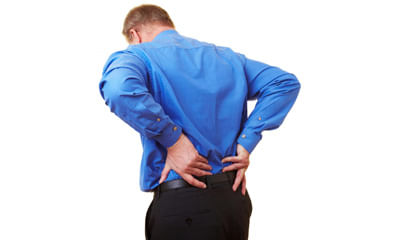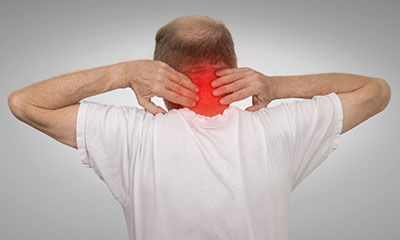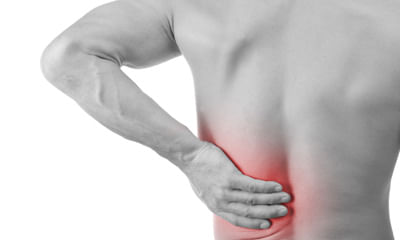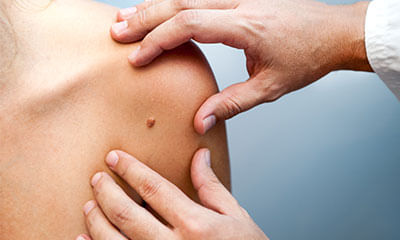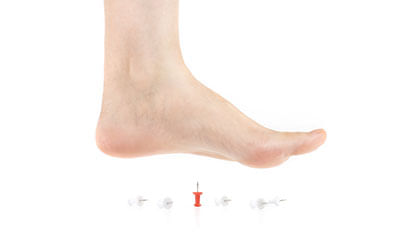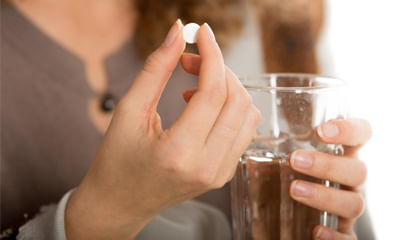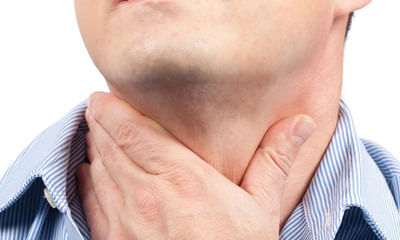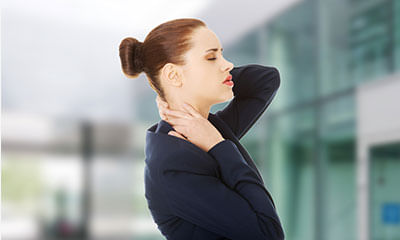Swelling On Right Side Of Neck
My mother has a pain in upper back side she has gerd and fatty liver problem a year ago, plss help how to relieve from t ...
Ask Free Question
Upper back pain can occur anywhere between the base of the neck and the bottom of the rib cage. Upper back pain may be caused by injuries or fractures, poor posture, disk problems or other issues, such as arthritis.The common causes of upper back pain stem from inflammation and micro-tears in the muscles, tendons and ligaments of the upper back or from arthritis, herniated disks, vertebral stenosis, or misalignments in the thoracic or cervical spine.A combination of rest, over-the-counter pain medications, and using a heating pad or ice pack can help reduce swelling, relax muscles, and promote healing. You can also visit physiotherapy clinics for drug free treatment option.
Dear sir / madammy son (22) has been diagnosed with ankylosing spondylitis its early diagnosis. His hlab27 is positive. ...
Ask Free Question
Ankylosing spondylitis ankylosing spondylitis is a cause of back pain in adolescents and young adults. Ankylosing spondylitis is a form of chronic inflammation of the spine and the sacroiliac joints chronic inflammation in these areas causes pain and stiffness in and around the spine, including the neck, middle back, lower back, and buttocks. Over time, chronic inflammation of the spine (spondylitis) can lead to a complete cementing together (fusion) of the vertebrae, a process referred to as ankylosis. Ankylosis causes loss of mobility of the spine. Pt treatment deep breathing for lung expansion and stretching exercises to improve spine and joint mobility. Are also advised to sleep on a firm mattress and avoid the use of a pillow in order to prevent spine curvature. Aerobic exercise is generally encouraged as it promotes full expansion of the breathing muscles and opens the airways of the lungs. Home remedies physical therapy for ankylosing spondylitis includes instructions and exercises to maintain proper posture. This includes deep breathing for lung expansion and stretching exercises to improve spine and joint mobility. Since ankylosis of the spine tends to cause forward curvature (kyphosis), patients are instructed to maintain erect posture as much as possible and to perform back-extension exercises. Patients are also advised to sleep on a firm mattress and avoid the use of a pillow in order to prevent spine curvature. Ankylosing spondylitis can involve the areas where the ribs attach to the upper spine as well as the vertebral joints, thus limiting breathing capacity. Patients are instructed to maximally expand their chest frequently throughout each day to minimize this limitation. Physical therapists customize exercise programs for each individual. Swimming often can be a very beneficial form of exercise, as it avoids jarring impact of the spine. Ankylosing spondylitis need not limit an individual's involvement in athletics. People can participate in carefully chosen aerobic sports when their disease is inactive. Aerobic exercise is generally encouraged as it promotes full expansion of the breathing muscles and opens the airways of the lungs. Cigarette smoking is strongly discouraged in people with ankylosing spondylitis, as it can accelerate lung scarring and seriously aggravate breathing difficulties. Occasionally, those with severe lung disease related to ankylosing spondylitis may require oxygen supplementation and medications to improve breathing. People with ankylosing spondylitis may need to modify their activities of daily living and adjust features of the workplace. For example, workers can adjust chairs and desks for proper postures. Drivers can use wide rearview mirrors and prism glasses to compensate for the limited motion in the spine. You should check with your doctor before using compression socks for your swelling. These special socks should be properly fitted for you and your needs. Also, be sure to wear them during the day and remove them before you go to bed. Leg elevation if you stand a lot during the day, try propping your feet up or soaking them in water when you get home to help prevent swelling. Muscle relaxant: reduces muscle tension and helps relieve muscle pain and discomfort. Transcutaneous electrical nerve stimulation (also known as tens) is something which helps ease muscle pain and spasms. You can strengthen the muscles by doing tonificationie. Improving the tone of the muscles by adding either weight cuffs / sand bags which will help you to improve the strength of the muscle.
My son left cheek and neck between it swollen inside whats the cause of adenoid infection and how to cure and be safe an ...
Ask Free Question
lot of causes. to know the cause you need FNAC( NEEDLE BIOPSY)WITH HISTOPATHOLOGICAL EXAMINATION. IT GIVES EXACT DIAGNOSIS SO AS TREATMENT.
Doctor, I had an accident in 2014, after taking x-ray, I got l1 compression. After taking 2 months bed rest, it got redu ...
Ask Free Question
Physical examination a thorough physical examination reveals much about the patient's health and general fitness. The physical part of the exam includes a review of the patient's medical and family history. Often laboratory tests such as complete blood count and urinalysis are ordered. The physical exam may include: •palpation (exam by touch) determines spinal abnormalities, areas of tenderness, and muscle spasm. •range of motion measures the degree to which a patient can perform movement of flexion, extension, lateral bending, and spinal rotation. •a neurologic evaluation assesses the patient's symptoms including pain, numbness, paresthesias (e.g. Tingling), extremity sensation and motor function, muscle spasm, weakness, and bowel/bladder changes. Particular attention may be given to the extremities. Either a ct scan or mri study may be required if there is evidence of neurologic dysfunction. Physical therapy which teaches the patient to strengthen the paravertebral and abdominal muscles which lend support to the spine. General exercises which help build flexibility, increase range of motion and strength. A corset or a brace could be used to provide support; cervical collars may be used to alleviate pain by restricting movement. Hot or cold packs on the affected area, ultrasound and electric stimulation are some of the other treatments which are used. Management of acute symptoms rest and support- with acute joint symptoms, a lumbar corset may be helpful to provide rest to inflamed facet joints. When acute symptoms decrease, discontinue corset by gradually increasing the time without the corset. Often the most comfortable position is flexion, esp. If there are neurologic signs due to decrease in the foraminal space from joint swelling or osteophytes. Education of posture- head, neck and shoulders should be supported by the back rest of chair with a small pillow in the lumbar spine, the feet supported and the arm resting on arm rests or on a pillow in the lap. Modalities- hot or cold packs on the affected area, ultrasound and electric stimulation are some of the other treatments which are used to decrease pain and reduce muscle spasm. Relaxation- by soft tissue techniques. Teach self relaxationtechniques, e.g like deep breathing exercises and physiological relaxation (laura mitchell method) and hydrotherapy. Traction- gentle intermittent joint distraction and gliding techniques may inhibit painful muscle responses and provide synovial fluid movement within the joint for healing. Gentle rom within the limits of pain. Management of subacute and chronic phase increase rom- free active exercises of lumbar spine. Pelvic tilting forward, backward in crook lying, quadriped, sitting and standing. Mobilization- restoration of intersegmental mobility by accessory pressure enables the patient to regain full functional painfree movement. Stretching exercises. Strengthening exercises.Posture correction.
Recently noticed right side cervical lymph node ,it movable and round shaped. I take antibiotic 7 days, that it reduced ...
Ask Free Question
Persistent cervical lymphadenopathy, or swelling of lymph nodes in the neck, can have various causes. It's important to note that this information is not a substitute for professional medical advice, diagnosis, or treatment. Possible reasons for a persistent cervical lymph node include: 1. Infection: infections in the head and neck area, such as upper respiratory infections or dental infections, can lead to lymph node enlargement. It's positive that the node reduced with antibiotics, suggesting an infectious cause. 2. Inflammatory conditions: non-infectious inflammatory conditions like autoimmune diseases can sometimes lead to swollen lymph nodes. 3. Malignancy: while less common, lymphoma or metastatic cancer can cause persistent lymphadenopathy. Since you've already taken antibiotics with some improvement, it suggests an infectious cause. However, the recurrence after stopping antibiotics warrants further evaluation. I strongly recommend that you consult with a healthcare professional for a thorough examination and appropriate investigations, which may include imaging studies or a biopsy if necessary. Meanwhile you can schedule a private text consultation within the app for a more in-depth discussion of their symptoms. It's crucial to obtain a detailed medical history and conduct further examinations to determine the exact cause and formulate an appropriate treatment plan.
Bump in back side of head under hair and very painful. Doctor prescribed zerodol sp for 3 days, completed course but pai ...
Ask Free Question
A boil is a painful and often swollen bump on the skin that results from an infection in a hair follicle or oil gland. Here's some information for boil patients: 1. **Causes:** Boils are typically caused by a bacterial infection, often Staphylococcus aureus. They can occur when bacteria enter the body through small nicks or cuts in the skin. 2. **Symptoms:** Boils usually start as a red, painful lump. Over time, they can become larger, fill with pus, and develop a white or yellow center. They may be surrounded by redness and swelling. 3. **Location:** Boils can appear on any part of the body but are commonly found on the face, neck, armpits, thighs, and buttocks. 4. **Treatment:** Mild boils may resolve on their own. Warm compresses applied to the area several times a day can help speed up the process. In some cases, a healthcare provider may need to drain the boil. They might prescribe antibiotics if the infection is severe or recurrent. 5. **Hygiene:** Keeping the affected area clean and avoiding squeezing or puncturing the boil can prevent complications and further infections. 6. **Pain Relief:** Over-the-counter pain relievers like ibuprofen or acetaminophen can help with the pain and discomfort associated with boils. 7. **Prevention:** Good hygiene practices, such as regular handwashing, can help prevent the spread of bacteria that can lead to boils. Keeping wounds clean and using proper wound care can also reduce the risk. 8. **Recurrent Boils:** If you experience recurrent boils, it may be a sign of an underlying health condition. Consult a healthcare professional for a thorough evaluation. It's important to note that while home care can be appropriate for mild cases, you should seek medical attention if the boil is large, very painful, or accompanied by a high fever, or if you have multiple boils. A healthcare provider can provide proper treatment and guidance for your specific situation.
I'm getting fever since last one month frequently and accordingly I have taken medicines for fever. But from last 10 day ...
Ask Free Question
Follow these herbal combinations for complete cure jai mangal ras 1 tablet twice a day vatari awleh 10 gm twice a day send your cbc report.
Dear doctors I hear crack/popping sound in my front neck and also back neck every time I make my neck/throat movement. W ...
Ask Free Question
If you're experiencing a crackling or popping sound in your neck when you move it, it could be due to several possible reasons: 1. Air bubbles: the sound could be caused by the release of air bubbles in the joints of the neck as you move. This is similar to the sound produced when you crack your knuckles. It is generally harmless and not a cause for concern. 2. Joint dysfunction: it's possible that the crackling sound is related to joint dysfunction, such as misalignment or degeneration of the cervical spine. This could be due to conditions like cervical osteoarthritis or cervical facet joint syndrome. If the cracking sound is accompanied by pain or restricted movement, it's advisable to consult a healthcare professional for an evaluation and appropriate management. 3. Muscle or ligament tension: tight muscles or ligaments in the neck can also cause cracking or popping sounds when they rub against each other during movement. This can occur due to poor posture, stress, or muscle imbalances. Stretching exercises, relaxation techniques, and postural correction may help alleviate these symptoms. If the cracking sound is not associated with pain, swelling, or other concerning symptoms, it is generally considered normal. However, it's always a good idea to consult a healthcare professional for a proper evaluation and diagnosis, especially if you're experiencing accompanying symptoms or if the sound is causing significant discomfort. The healthcare professional will be able to assess your specific situation, perform a physical examination, and may order additional tests if necessary. They can provide you with appropriate advice and treatment options based on the underlying cause of the crackling sound in your neck.
Sir since some months my mother's neck has swelled, and for that we have visited a doctor and he told to do usg of thyro ...
Ask Free Question
Hi, if you can send all the reports then I can help you better. As per your details it's a suspicious follicular neoplam & further molecular testing is required. Based on that dicision can be taken whether observation or surgery is needed. Can consult with me through private section for detailed discussion & further action.
Seronegative spondylitis problem and anterior uveitis problem and sexual health issue n. ...
Ask Free Question
Psoriatic spondylitis psoriatic spondylitis is the medical term for a type of psoriatic arthritis that affects the spine and the joints in the pelvis. The symptoms may develop anywhere between the pelvis and the neck. People with psoriatic spondylitis may experience pain, inflammation, and stiffness in their neck and lower back. Symptoms •back pain. •pain and swelling in other joints (including hips, knees, shoulders, ankles, feet, elbows, hands, and wrists) •dactylitis (the sausage-like swelling of the toes and fingers) •reduced range of motion of the low back, spine, and pelvis. •psoriasis. •chronic fatigue. •osteoporosis. The most common medications for psa are often also used to treat ankylosing spondylitis, including nonsteroidal anti-inflammatory drugs (nsaids), disease-modifying antirheumatic drugs (dmards), sulfasalazine (azulfidine), immunosuppressants, and biologic medications, such as tnf inhibitors.

